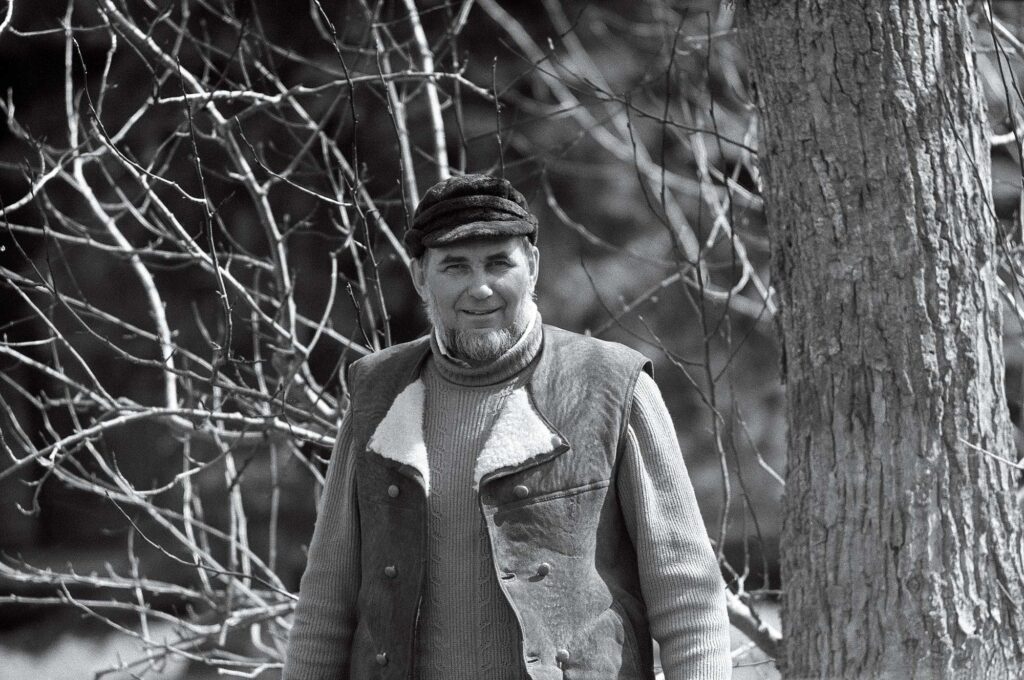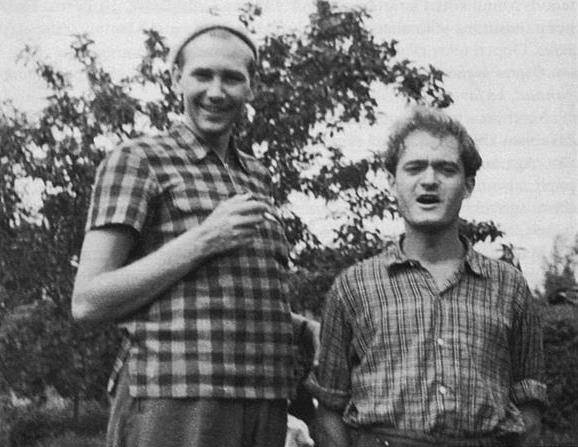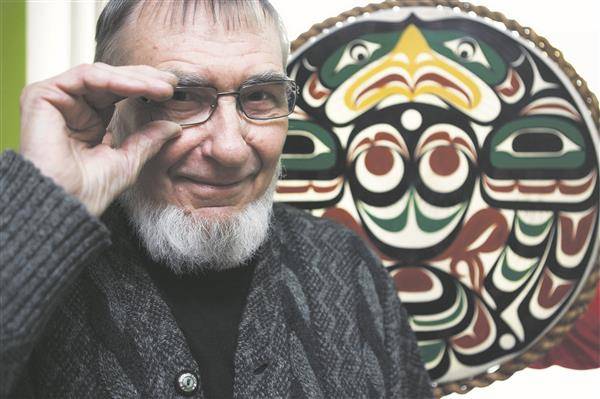The internationally renowned conductor, Tõnu Kaljuste, and the multiple Grammy Award-winning Estonian Philharmonic Chamber Choir celebrate the 91st birth anniversary of Veljo Tormis – one of the most important Estonian choral composers – with a grand live concert; Estonian World will live broadcast (paid access) the performance on 7 August at 6.45pm EEST (4.45pm BST / 11.45am EDT).
The performance is part of Nargenfestival, an annual summer music festival founded by Tõnu Kaljuste in 2006, and honours Veljo Tormis (1930-2017), who would have turned 91 on 7 August.
Please note the access to the live broadcast is ensured with the tickets only – you can purchase the tickets below.
Estonian World caught up with Kai Kutman, one of the organisers of the Nargenfestival, who shed more light on what to expect from the concert.
What pieces will be performed?
Kai Kutman: The performance’s centrepiece is Estonian Calendar Songs, a major cycle linked to important holidays in the traditional calendar and completed in 1967. Its five groups of songs became a turning point for the composer: his dedication to the study of Estonian folk songs and in-depth examination of the musical treasure-trove led to a profound understanding of the essence of the runic song (‘regilaul’ in Estonian) and its structural integrity, and a realisation of how to sustain the integrity in musical compositions.
Veljo Tormis said the world of the runic song was complete, there was no need for us to improve it or develop it, and that we could only have a glimpse into the world and make it visible to others for a moment.
“I finally realised that runic songs should not be arranged as I had done in the Kihnu Wedding Songs (1959). The very value of the runic song lies in its melody, repetitions and non-functionality in harmony. There is more cluster harmony there [in Calendar Songs] and parallel movement with triads and seventh chords. At the beginning there were parallel triads, but later, in St. John’s Day Songs already parallel clusters for example, six-voice chords, which produce a massive sound together,” he said.
That was the moment when he found his niche as a composer, a niche for the rest of his life.
What sources did Tormis use for his compositions?
Kai Kutman: Tormis and the runic song met thanks to Men’s Songs (1964–1965) although he used newer folk songs there. He liaised with the folklore archives of the Estonian Literary Museum as he was writing the cycle. The museum’s folklorists later helped him with arranging the texts of the Calendar Songs.
Tormis had also mentioned the influence of the Estonian writer Jaan Kaplinski with whom he used to discuss the runic song a lot. Tormis found the tunes of the Calendar Songs in the five-volume collection Estonian Folk Songs with Tunes (1956–1965) compiled by Herbert Tampere. The collection was the source of many of his future works and a major inspiration for several other Estonian composers.
The idea to write a multi-movement choral cycle was not there immediately but took shape gradually during composing. The runic songs the cycle is based on are from Volume 2 of Tampere’s collection which was the first that Tormis read, and which contains runic songs sung at traditional holidays and family events.
Swing Songs was the first, completed in 1966 and followed in 1967 by St. Catherine’s Day Songs and Martinmas Songs, then St. John’s Day Songs and finally Shrovetide Songs. The cycle alternates men’s and women’s voices until the last part, St. John’s Day Songs which is sung by both voices together. The songs in each group have been selected to match the complete set of rituals of a given holiday (all these songs will be performed in the concert – editor).
The runic songs in the cycle originate in different parts of Estonia: Martinmas Songs in Tormis’ home parish of Kuusalu, St. Catherine’s Day Songs in Põlva, and Shrovetide Songs, Swing Songs and St. John’s Day Songs elsewhere. St. John’s Song, the last in the St. John’s Day Songs group is from Hargla located in Valga County near the Latvian border. It is probably a Latvian tune, a typical song sung at Latvian Midsummer. Tormis replaced the Latvian liigo, liigo chorus with jaani, jaani and jaaniko that were more Estonian, and because of the “Cesarean section” the Latvian song sung by Estonians got an “Estonian” chorus.
The entire Estonian Calendar Songs cycle was premiered by the men’s choir and women’s choir of the Estonian Academy of Sciences and conductor Arvo Ratassepp on 6 April 1968.

Can you tell us more about his work with the poets of his time?
Kai Kutman: Tormis’ vocal music has always been guided by lyrics – the musical solution and mood follow from the text. He has set music to both folklore and poetry. Tormis was on good terms with the poets of his time; Paul-Eerik Rummo, Jaan Kaplinski and Hando Runnel are the ones with whom he collaborated most. The concert on 7 August sees the Calendar Songs framed by choral works set to the texts of Jaan Kaplinski and Hando Runnel.
Tormis composed the first works to Kaplinski’s poems in 1966. It was the miniatures cycle Ten Haikus for solo voice and piano and Spring Sketches for women’s choir. Since then, Kaplinski seems to be the poet with whom Tormis worked most frequently. The lyrics of the One Day We Will Return or Our Shadows for men’s choir is from Kaplinski’s collection of poems Of Dust and Colours published in 1967, which Tormis happened to read in 1969. In the same year, Tormis wrote two more pieces to lyrics from the collection – Ballad of Mary’s Land and One and Only Land for men’s choir. They were among the works he composed for the song contest celebrating the 25th anniversary of the Estonian National Men’s Choir.
Our Shadows is one of the pieces where Tormis experimented with dodecaphony – the song consists of two musical lines that make up twelve tones. The piece was premiered by the Estonian National Men’s Choir and conductor Olev Oja at the Estonia Concert Hall in Tallinn on 5 December 1970. Tormis arranged the song for mixed choir in 1993.
Tormis composed his first piece to a text by Hando Runnel in 1968. It was the cantata The Beginning of the Song. He wrote more pieces to Runnel’s lyrics in the 1980ies – the choral works The Viru Oath (1980), Reflections with Hando Runnel (1981), An Estonian’s Little Songs (1981), Loyal Little Songs (1981), Little Songs of “Stagnation Time” (1981), Virumaa and Pandivere (1987) and many others.
Apparently, Tormis’ music had a wider impact in the society?
Kai Kutman: In the period of songs of political sarcasm, Tormis tried to say with music things that could not have been uttered aloud. The Estonian musicologist, professor Toomas Siitan, has suggested musica poetica – a German music theory term from the 16th-17th century, meaning a composition method using traditional musical symbols – to refer to meanings outside music. Tormis said that everything he did in music was “outside music”. “I never really aimed for just music-making /–/, I aimed for the pain and suffering of life. And words are the most important thing for me in music,” he said.
Musical form follows the lyrics in The Viru Oath (performed at the concert – editor), a choral piece written for both men’s choir and mixed choir in the same year. The main mood is set by gammas in minor that occasionally pile up in canons and shape the song’s character. The song is dedicated to the conductor Ants Soots. It was premiered by the Estonian National Men’s Choir and conductor Olev Oja at the Estonia Concert Hall in Tallinn on 18 October 1980.

“On the wings of Tormis 2021: Estonian Calendar Songs. Tormis 91”
7 August at 6.45pm EEST (4.45pm BST / 11.45am EDT) at the Grand Hall of the Estonian Academy of Music and Theatre in Tallinn
Estonian Philharmonic Chamber Choir
Choir masters: Lodewijk van der Ree, Mai Simson
Conductor: Tõnu Kaljuste
Veljo Tormis (1930–2017)
Kord me tuleme tagasi / One Day We Will Return (Our Shadows, 1969/1993), formerly translated as Once We Will Reappear, lyrics by Jaan Kaplinski
Estonian Calendar Songs / Eesti kalendrilaulud (1966–1967)
I Martinmas Songs / Mardilaulud (1967), for male choir
Lyrics folklore (Kuusalu parish), arranged by Ruth Mirov
1. Martinmas Beggars Behind the Door / Mardid ukse taga
2. Greeting / Teretamine
3. Words of Blessing / Õnnistussõnad
4. Dance / Tants
5. Casting a Spell / Lausumine
6. Begging for Gifts / Andide palumine
7. Thanking / Tänamine
8. Wishes / Soovid
9. Ending / Lõpetus
II St. Catherine’s Day Songs / Kadrilaulud (1967), for female choir
Lyrics folklore (Põlva), arranged by Ruth Mirov
1. Entering / Sissetulemine
2. Dance (Saying Hello) / Tants (Teretamine)
3. Begging for Gifts / Andide palumine
4. Thanking, Wishes, and Leaving / Tänamine, soovid ja lahkumine
III Shrovetide Songs / Vastlalaulud (1967), for male choir
Lyrics folklore
1. Vistel-Vastel (based on a folk song from Simuna/Väike-Maarja/Kadrina)
2. Spell Upon Flax / Lina loitsimine (based on a folk song from Paistu)
3. Sledding Song / Liulaskmise-laul (based on a folk song from Sangaste)
IV Swing Songs / Kiigelaulud (1966), for female choir
Lyrics folklore
1. The Narrow Swing / Kitsas kiik (Muhu)
2. The Sea Under the Swing / Meri kiige all (Rõngu)
3. A Pretty Girl on the Swing / Ilus neiu kiigel (Kuusalu)
4. The Swing Asks for Gifts / Kiik tahab kindaid (Harju-Jaani)
5. Shy on the Swing / Kiigel kartlik (Harju-Jaani)
6. Apple Tree / Õunapuu (Koeru)
Soloist Mariliis Tiiter
V St. John’s Day Songs / Jaanilaulud (1967), for mixed choir
Lyrics folklore
1. Call to the Midsummer Bonfire I / Kutse jaanitulele I
Soloists Karin Salumäe, Marianne Pärna
2. Call to the Midsummer Bonfire II / Kutse jaanitulele II
3. Can’t be Caught by a Gun / Ei ole püssil püütav
4. Why We’re Waiting for St. John’s, formerly translated as Why St. John is Awaited / Miks Jaani oodatakse
5. St. John’s Steed / Jaani hobu
6. Fire Incantation, formerly translated as Fire Spell / Tulesõnad
Soloist Rainer Vilu
7. St. John’s Song / Jaanilaul
Soloist Annika Lõhmus
The Viru Oath (1980) / Viru vanne, lyrics Hando Runnel
Soloist Henry Tiisma
The Estonian Philharmonic Chamber Choir, named by the BBC Music Magazine as one of the ten best choirs in the world, was founded in 1981 by conductor Tõnu Kaljuste. The repertoire of the choir extends from the Gregorian chant and baroque to the music of the 21st century, with a special focus on the work of Estonian composers, such as Arvo Pärt, Veljo Tormis, Erkki-Sven Tüür, Galina Grigoryeva, Toivo Tulev, Tõnu Kõrvits, Helena Tulve – and introducing their output to the world.

The choir has won the Grammy Award for Best Choral Performance twice – in 2007 with Arvo Pärt’s Da Pacem and in 2014 with Pärt’s Adam’s Lament (the latter was shared with Tui Hirv, Rainer Vilu, Sinfonietta Riga, Tallinn Chamber Orchestra, Latvian Radio Choir and Vox Clamantis).
Tõnu Kaljuste is a world-renowned choir and orchestra conductor. He won the Grammy Award for Best Choral Performance for the Arvo Pärt album Adam’s Lament in 2014. In 2019 he won the International Classical Music Award for the recording of Arvo Pärt’s symphonies with the NFM Wrocław Philharmonic Orchestra.
Kaljuste’s recordings have won several other prestigious prizes such as the Cannes Classical Award (1999), Diapason d’Or (2000), Edison Musical Award (2000) and Classic BRIT Award (2003). He has recorded for the ECM Records, Virgin Classic, BIS and Caprice Records labels.
Cover: Conductor Tõnu Kaljuste with the Estonian Philharmonic Chamber Choir.




